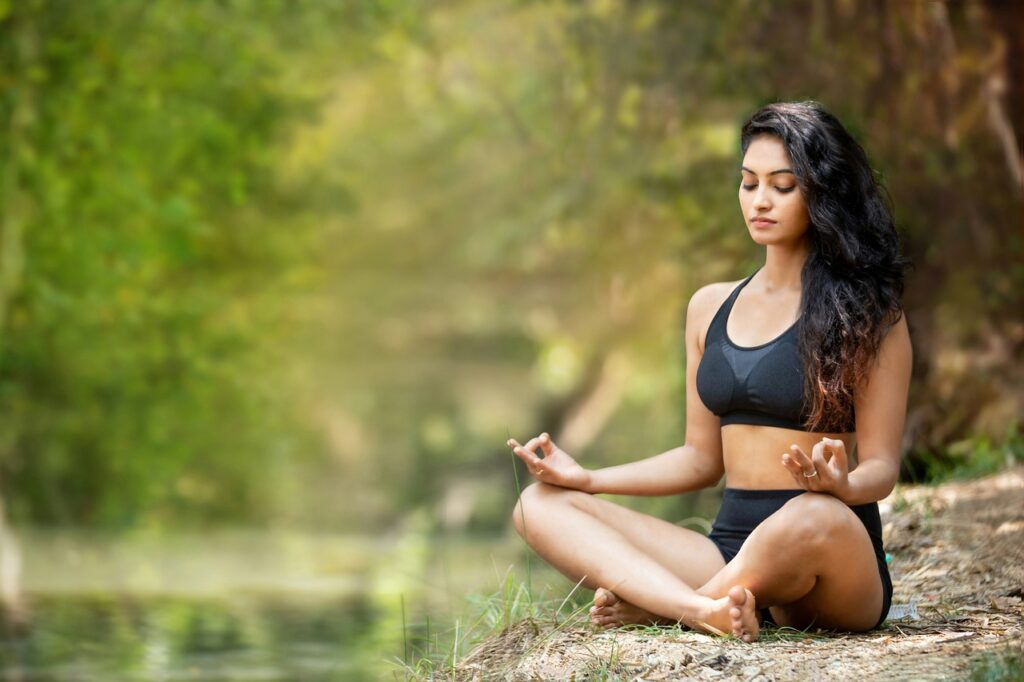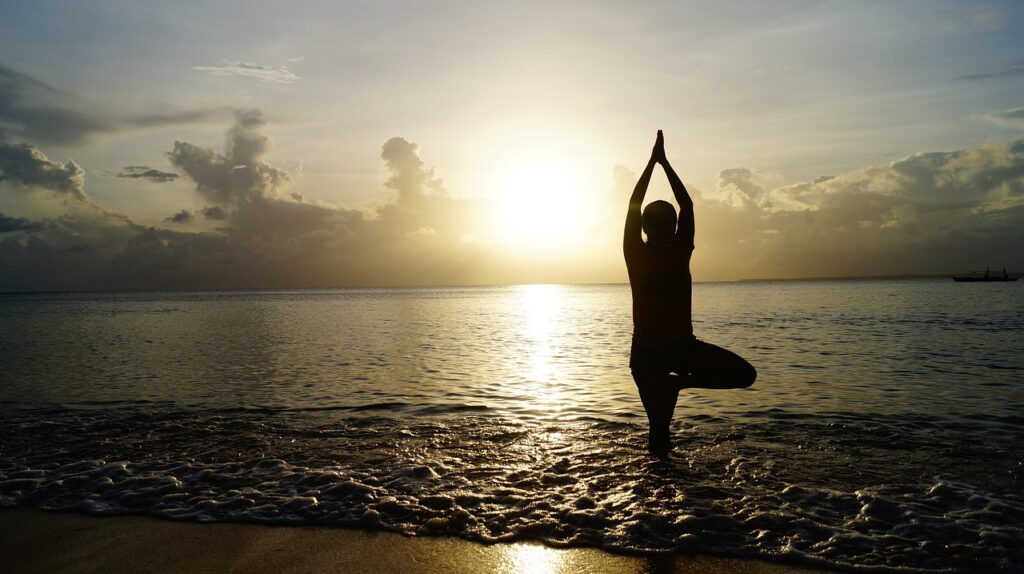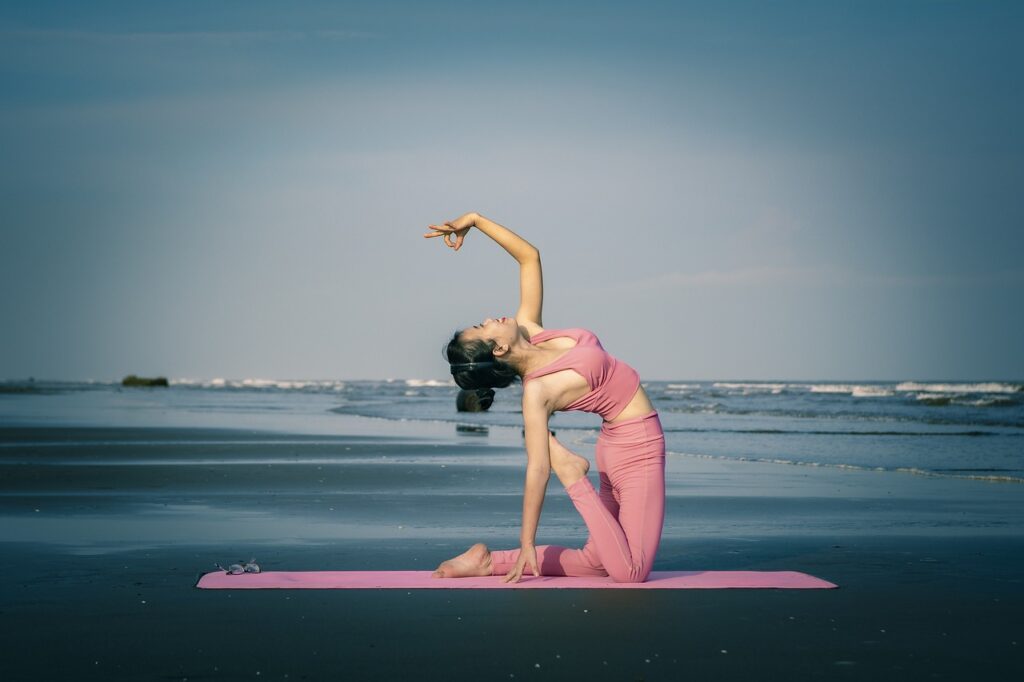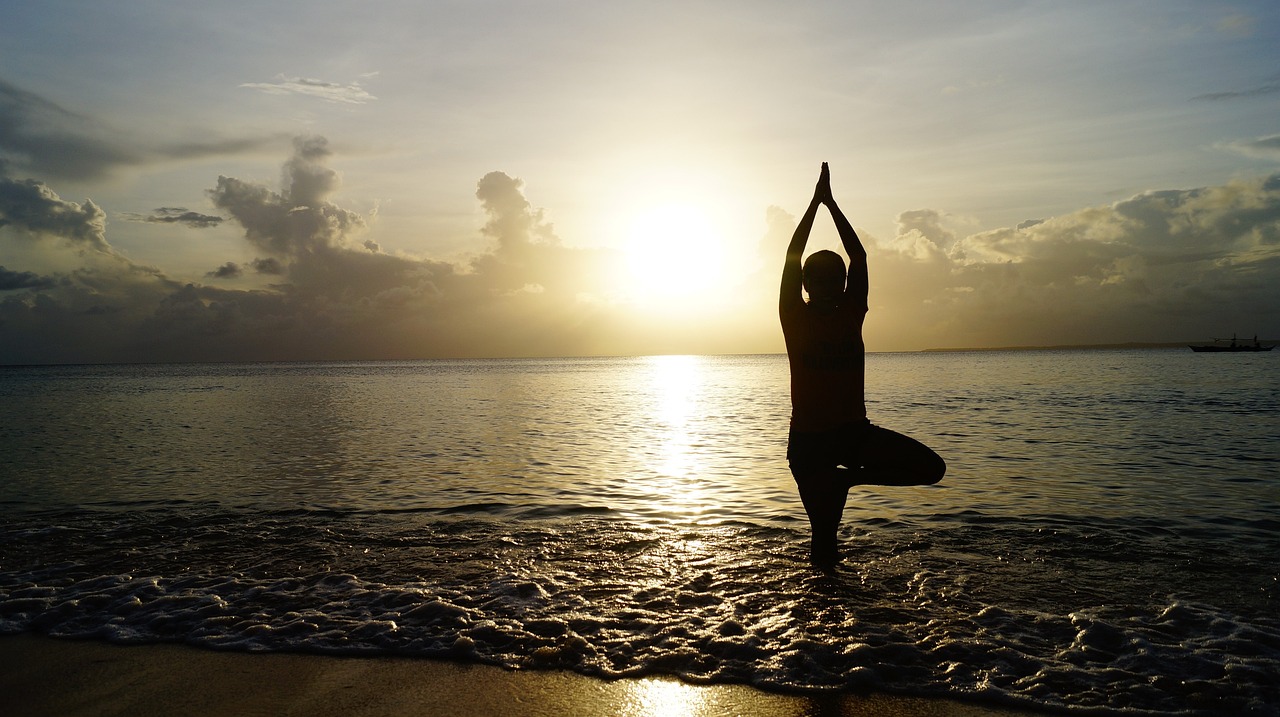Are you a dedicated yogi who loves the adventurous lifestyle of traveling? If so, you may have pondered the considerations for continuing your yoga practice while on the go. Whether you’re a seasoned practitioner or just starting out, it’s important to understand the potential challenges and benefits of practicing yoga while traveling. From finding the right space to managing time constraints, this article will explore some key factors to help you maintain your yoga practice while exploring new horizons. So pack your mat, take a deep breath, and let’s dive into the world of practicing yoga while traveling!
Choosing the Right Gear
Lightweight Yoga Mat
When it comes to practicing yoga while traveling, having a lightweight yoga mat is essential. You want a mat that is easy to carry and won’t weigh down your luggage. Look for mats made from materials such as natural rubber or travel-friendly materials like PVC, which are lightweight and easy to roll up. Additionally, consider a mat with good grip, as you never know what type of flooring you will encounter on your travels.
Portable Yoga Props
While you may not be able to bring your entire collection of yoga props with you on your travels, investing in a few portable props can greatly enhance your practice. Consider getting a lightweight and collapsible yoga block, which can provide support and stability during poses. A travel-friendly yoga strap can also be useful for deepening stretches and improving alignment. These portable props take up minimal space in your luggage, but can make a big difference in your practice.
Comfortable Clothing
Choosing comfortable clothing is crucial for enjoying your yoga practice while traveling. Opt for breathable fabrics that allow for ease of movement, such as cotton or moisture-wicking materials. Look for clothing that is lightweight and easy to pack, making it convenient for your travels. Additionally, consider packing layers to accommodate for different weather conditions. Wearing comfortable clothing will not only enhance your practice, but also contribute to a more enjoyable overall experience.
Finding Suitable Space
Hotel Room
One of the most convenient spaces for practicing yoga while traveling is your own hotel room. It provides a private and familiar space where you can practice at your own pace. Clear out any furniture that may get in the way and lay your yoga mat on the floor. Take advantage of the quiet and peaceful environment to connect with your breath and find your center.
Beach or Park
If you want to take your yoga practice outdoors, the beach or a nearby park can be great options. The natural beauty and open space can provide a serene and calming atmosphere for your practice. Just make sure to choose a clean and flat area where you can lay your mat. Remember to bring sunscreen, a hat, and water to stay protected and hydrated under the sun.
Local Yoga Studios
If you prefer a structured class or want to experience the local yoga community, look for yoga studios in the area you’re visiting. Many studios offer drop-in classes for travelers, allowing you to maintain your practice and connect with fellow yogis. Check their schedule in advance and find a class that fits your travel itinerary. Attending a class in a new environment can bring a fresh perspective to your practice.
Online Classes
In today’s digital age, you can practice yoga anywhere with an internet connection. Online yoga classes are a convenient option for travelers, as they offer a wide variety of styles and durations to choose from. Whether you have a small window of time in your hotel room or want to practice in a scenic location, online classes allow you to have a guided practice at your own convenience. Explore different platforms and find instructors whose teaching style resonates with you.

Adapting to Different Environments
Altitude and Climate
One consideration when practicing yoga while traveling is the altitude and climate of your destination. If you’re traveling to a high-altitude location, you may experience changes in breathing and energy levels. Take it slow and modify your practice accordingly. Also, be mindful of the climate and ensure you are properly hydrated. In hot and humid environments, you may need to adjust the intensity of your practice to avoid overheating.
Sudden Temperature Changes
When traveling to different regions, you might encounter sudden temperature changes. It’s important to dress appropriately and bring layers that can easily be added or removed. This will allow you to adapt to the fluctuating temperatures and feel comfortable during your practice. Additionally, be aware of how temperature changes may affect your muscles and joints, and take the necessary precautions to prevent injuries.
Noise and Distractions
While traveling, you may encounter noise and distractions that are beyond your control. Whether it’s traffic, construction sounds, or people talking nearby, it’s important to adapt and find ways to stay focused. One approach is to use noise-canceling headphones or play calming music to drown out unwanted noise. Alternatively, you can shift your focus inward and use the distractions as an opportunity to practice mindfulness and concentration.
Modifying Your Practice
Limited Space
In some cases, you may find yourself with limited space to practice yoga while traveling. Whether it’s a small hotel room or a crowded airport terminal, it’s important to be adaptable. Consider modifying your practice by focusing on seated poses, breathing exercises, or gentle stretches that can be done in a smaller area. Remember that even a few minutes of mindful movement can make a difference in how you feel during your travels.
Alternative Poses
If you find yourself without access to the typical props or space you’re used to, it’s helpful to have a repertoire of alternative poses that can be practiced anywhere. For example, instead of using a bolster for supported bound angle pose, you can use a rolled-up towel or blanket. Instead of a wall for support in a standing forward fold, you can use the back of a chair. Explore different variations of poses to adapt to your surroundings and make the most of your practice.
Using Furniture or Walls for Support
When practicing yoga in a new environment, take advantage of the furniture or walls around you for support. Chairs can be used for stability in standing poses or as a prop for seated poses. Walls can provide support for balancing poses or help with alignment in inversions. Be creative and think outside the box when it comes to using your surroundings to assist your practice.
Props and Modifications
If you have the space and resources, consider bringing some of your favorite props with you while traveling. Portable props like yoga blocks, straps, or towels can help you modify poses and make your practice more comfortable. They can also provide additional support and stability when practicing in different environments. Explore different ways to use props and modifications to adapt your practice to your current situation.

Incorporating Yoga into Your Travel Routine
Morning vs. Evening Practice
Choosing between a morning or evening practice while traveling depends on your personal preference and schedule. A morning practice can energize you for the day ahead, helping you feel more focused and centered. An evening practice, on the other hand, can help you wind down and relax after a day of travel or exploration. Consider the timing of your activities and choose a practice that aligns with your energy levels and goals for the day.
Short Sessions vs. Full Classes
When traveling, finding time for a full yoga class may not always be feasible. Instead, aim for shorter, focused sessions that still allow you to connect with your body and breath. This could be as simple as a 10-minute meditation or a quick flow sequence. Prioritize quality over quantity and find a balance between maintaining your practice and experiencing the other aspects of your journey.
Setting Realistic Goals
It’s important to set realistic goals for your yoga practice while traveling. Acknowledge that your practice might look different and that it’s okay to adjust your expectations. Instead of focusing on achieving advanced poses or increasing flexibility, shift your focus to maintaining consistency, finding moments of stillness, and being present in your practice. Embrace the opportunities that travel brings, both on and off the mat.
Maintaining Consistency
Maintaining consistency with your yoga practice while traveling can be challenging but is achievable with a little planning and intention. Set aside specific times during your trip dedicated to your practice. It could be every morning before starting your day or every evening before bedtime. Prioritize your practice as a non-negotiable part of your routine, just like brushing your teeth or eating breakfast. By making it a habit, you’ll find it easier to stay consistent and reap the benefits of your practice while on the go.
Taking Care of Your Body
Proper Warm-up and Cool-down
Taking proper care of your body is essential when practicing yoga while traveling. Before diving into your practice, ensure you warm up your muscles with gentle movements and stretches. This will help prevent injuries and allow for a more fluid and enjoyable practice. Similarly, finish your practice with a cooling down period, allowing your body to relax and recover. Incorporating both warm-up and cool-down routines will help you maintain a healthy and balanced practice.
Listening to Your Body
Your body is your best guide when it comes to practicing yoga while traveling. Pay attention to how you feel physically and emotionally during your practice. If you’re feeling fatigued or sore, honor those sensations and modify your practice accordingly. Your practice should be nourishing and supportive of your overall well-being. Be kind to yourself and remember that it’s okay to take breaks or modify poses as needed.
Hydration and Nutrition
Traveling can sometimes disrupt established routines, including hydration and nutrition. It’s important to prioritize staying hydrated and nourishing your body with nutritious foods. Carry a water bottle with you at all times and make sure to drink enough water throughout the day. Carry healthy snacks such as nuts, fruits, or protein bars to fuel your body before or after your practice. Proper hydration and nutrition will support your overall energy levels and help you feel your best during your travels.
Preventing Injuries
When practicing yoga while traveling, take extra care to prevent injuries. Pay attention to proper alignment and listen to your body’s limits. Avoid pushing yourself too hard or attempting advanced poses without proper guidance. If you’re unsure about a pose or have any concerns about your safety, consult a qualified yoga instructor. Engage in poses and movements mindfully, being aware of your body’s individual needs.

Connecting with Local Yoga Communities
Attending Yoga Workshops or Retreats
If you’re interested in deepening your practice and connecting with the local yoga community, seek out yoga workshops or retreats in your travel destination. These events often bring together like-minded individuals who share the love for yoga. Participating in workshops or retreats can provide an opportunity to learn from experienced instructors, explore new styles or techniques, and make new friends along the way.
Finding Yoga Meetups
Yoga meetups are a great way to practice with locals and fellow travelers who share a passion for yoga. You can find yoga meetups through online platforms or by connecting with local yoga studios or teachers. Meetups are typically informal gatherings where practitioners come together in a park, beach, or other public spaces to practice yoga. Joining a meetup can offer a sense of community and connection wherever you travel.
Exploring Yoga Events or Festivals
If you’re lucky enough to be traveling during a yoga event or festival, make it a point to attend. Yoga events attract yogis from all over the world and create a vibrant and immersive yoga experience. From workshops and classes to lectures and performances, these events offer a range of activities that celebrate the practice of yoga. Immerse yourself in the local yoga community, try new styles, and soak in the positive energy of these gatherings.
Respecting Local Culture and Customs
Researching Cultural Norms
When practicing yoga while traveling, it’s essential to respect the cultural norms and traditions of the country you’re visiting. Take the time to research and understand the local customs and practices regarding yoga. Some countries may have specific rules or guidelines for practicing yoga in public spaces. By being knowledgeable and respectful, you can ensure that your practice aligns with the cultural context of your travel destination.
Appropriate Attire
In certain countries, appropriate attire is crucial when practicing yoga. Make sure you dress modestly and according to cultural expectations. For example, in some places, it may be necessary to cover your shoulders or wear long pants instead of shorts. By dressing appropriately, you show respect for the local culture and create a harmonious environment for your practice.
Observing Local Traditions or Rituals
Immerse yourself in the local traditions and rituals related to yoga. Some destinations may have unique practices or ceremonies related to yoga that you can witness or participate in. Do your research beforehand and engage respectfully with the local customs. This can deepen both your cultural understanding and your connection to the practice of yoga.
Being Mindful of Noise Levels and Space
When practicing yoga in public spaces, it’s important to be mindful of noise levels and space. Respect the tranquility of the surroundings and try to create a peaceful and harmonious environment. Keep your voice low and avoid disruptive behavior that may disturb others. Be aware of your space and make sure your practice doesn’t encroach on others’ personal space. By being mindful of your actions, you contribute to a positive experience for both yourself and those around you.
Managing Jet Lag and Fatigue
Jet Lag Recovery Exercises
Jet lag can disrupt your sleep patterns and leave you feeling fatigued and disoriented. To combat jet lag, incorporate specific exercises into your yoga practice that target energy restoration and circulation. Gentle movements, deep breathing exercises, and inversions can help reduce jet lag symptoms and promote relaxation. Practicing these recovery exercises upon arrival or before bedtime can help you adjust to the new time zone more effectively.
Breathing Techniques for Energy
When dealing with fatigue during your travels, breathing techniques can be powerful tools to boost your energy levels. Certain breathwork techniques, such as Kapalabhati (skull-shining breath) or Bhastrika (bellows breath), can invigorate the body and wake up the mind. Practicing these energizing breathing exercises throughout the day can provide a natural and sustainable source of energy, helping you stay alert and focused during your travels.
Yoga Nidra for Rest and Relaxation
Yoga Nidra, also known as yogic sleep, is a guided meditation technique that induces deep relaxation and rejuvenation. It can be especially beneficial when dealing with jet lag or fatigue. Find a quiet and comfortable space, either in your hotel room or at your chosen practice location, and follow a Yoga Nidra recording or guided meditation. This practice can help improve the quality of your sleep, reduce stress, and replenish your energy levels.
Staying Motivated and Inspired
Exploring New Styles or Teachers
Traveling is a great opportunity to explore different styles or teachers of yoga. Seek out local yoga classes or workshops that offer a unique perspective or approach to the practice. Trying something new can reignite your passion for yoga, introduce you to new techniques, and broaden your understanding of the practice as a whole. Embrace the diversity of yoga and be open to new experiences that can inspire and invigorate your practice.
Journaling and Reflection
Keeping a travel journal can be a powerful tool for staying motivated and inspired during your yoga travels. Reflect on your experiences, document your practice, and write down any insights or discoveries along the way. Journaling allows you to deepen your connection with the practice and track your personal growth. It’s a tangible reminder of the transformational power of yoga, both on and off the mat.
Capturing Travel Yoga Moments
Incorporate photography into your yoga travels by capturing moments from your practice in unique and beautiful locations. Take photos of your poses or your surroundings, and use them as visual reminders of your journey. Share these images with others who may be inspired by your travels and practice. Photography can be a creative outlet that adds depth and meaning to your yoga experience while traveling.
Sharing Experiences with Others
Lastly, don’t forget to share your yoga travel experiences with others. Whether it’s with fellow travelers, friends, or through social media, sharing your journey can inspire and motivate others. Share your insights, challenges, and triumphs with others who have a similar passion for yoga. Through these connections, you can create a supportive community and foster a sense of belonging, even while on the move.
By considering the various aspects of practicing yoga while traveling, you can create a fulfilling and enriching experience. Remember to choose the right gear, find suitable space for your practice, adapt to different environments, modify your practice as needed, incorporate yoga into your travel routine, take care of your body, connect with local yoga communities, respect local culture and customs, manage jet lag and fatigue, and stay motivated and inspired. With these considerations in mind, your yoga practice can thrive as you explore the world.

